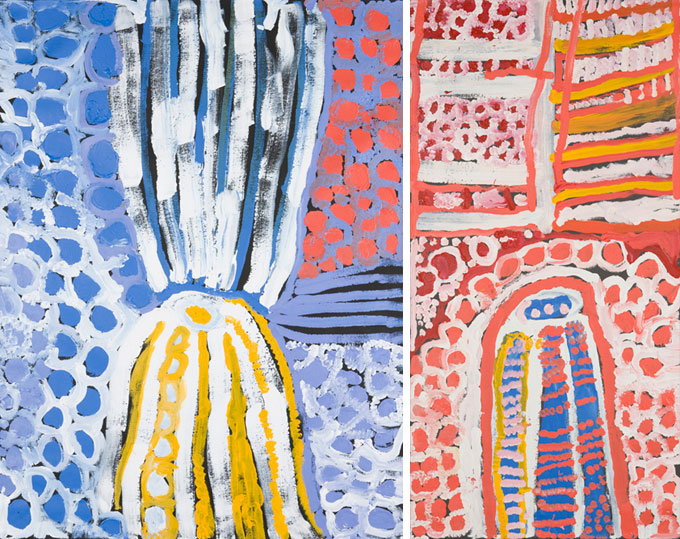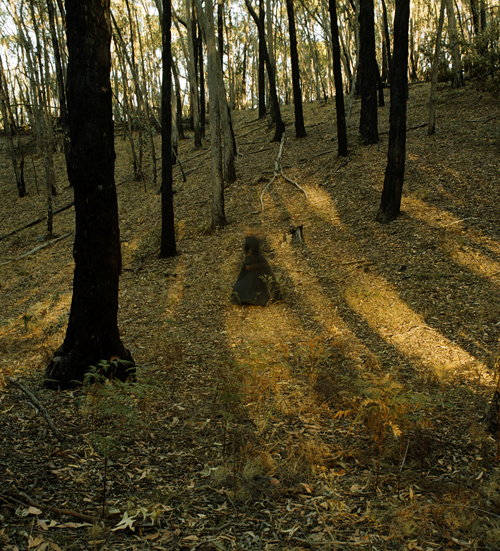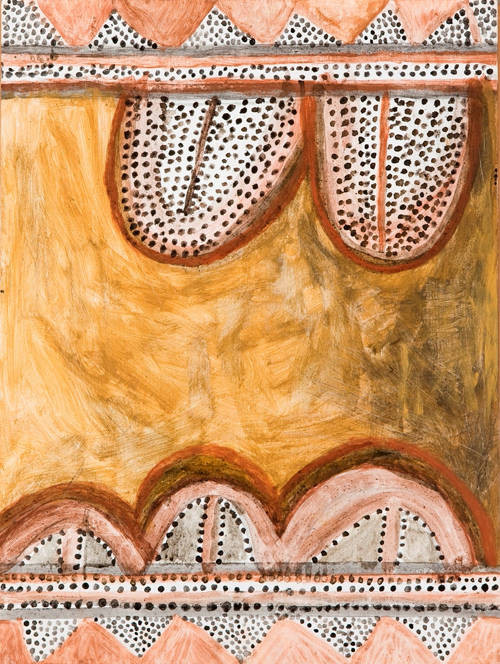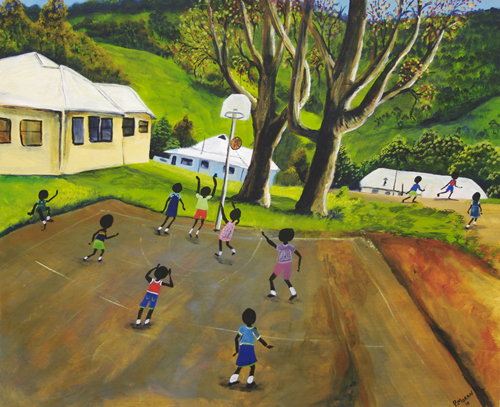Interview with Glenn Pilkington - Western Australian Indigenous Art Awards
Aboriginal Art Directory | 03.08.10
Author: Glenn Pilkington
News source: Western Australian Indigenous Art Awards
1. Where did the idea of the Western Australian Indigenous Art Awards come from?
The Awards came about from a need to acknowledge and recognise the significant contribution Indigenous artists make to Australia socially, culturally and economically.
The Awards model, which is entirely non-acquisitive celebrates the many achievements of Indigenous artists, and provides valuable opportunity for further career development.
2. How successful was the award in its first year in 2008?
The Awards was very successful in the first year, and received a large number of nominations. As with any new initiative the first year is often the most challenging as you are developing a completely new Awards initiative from scratch. Considering that there was no other non –acquisitive comparable Art Awards in the country, we were developing something from scratch, so the response we received from around the country was wonderful and made for a very successful inaugural year.
3. How have the careers of select previous winners and finalists evolved?
As with any positive exposure an artist receives from an exhibition, the impact on artist’s careers can be quite significant. The financial benefit of winning one of the awards categories provides artists with opportunities to further enrich their lives both professionally and personally. The finalist receive a lot of exposure through our diverse audiences and media, which often brings more interest to the artist, providing opportunities to exhibit their works in new locations and to new audiences.

Harry Tjutjuna
Mututa Tjukurpa 2008
synthetic polymer paint on canvas
2 parts, 107.0 x 91.0 cm; 119.5 x 60.0 cm
Artwork courtesy of Aboriginal & Pacific Art, Sydney
Image © Harry Tjutjuna, courtesy of Ninuku Arts
4. How have the public got behind the awards?
The public have responded incredibly well to the Awards by visiting the exhibition and the artist talks, telling others about the exhibition and importantly, the public are the judging panel for the final of the three award categories. By voting for their favourite artist they choose the winner of the People’s Choice Award of $5000.00. This year we hope for even more visitors to the Awards.
5. What can we expect from this years awards?
This years Award’s exhibition features an incredibly diverse selection of finalist and artworks ranging from traditional the raw ochre custodial paintings of Mick Jawalji from the Kimberley, to beautiful Larrakitj and bark paintings of Gulumbu Yunupingu from north-east Arnhem Land and the challenging and satirical video works of Brisbane’s Richard Bell.
Any preconception people may have about Indigenous art will most certainly be challenged by the work featured in the Awards this year, which makes it incredibly exciting for Western Australian audiences.

r e a
PolesApart 4 2009
C type print
3 parts, dimensions variable
Artwork courtesy of the artist and BREENSPACE, Sydney
Image © r e a, courtesy of BREENSPACE, Sydney
6. Are there any magical moments in your involvement with these awards
that you would like to share?
Working in the West can sometimes be very isolating when working in Indigenous Art, and even getting out to the regions in WA is sometimes a challenge, but this year I was able to travel Australia and meet with so many wonderful artists, gallery owners, collectors and curators who I had often only ever spoken with on the telephone or in email. It was a wonderful opportunity to build new relationships and strengthen existing ones, and to see the amazing efforts that people around the country are putting into promoting, selling and supporting Indigenous artists. Being away from home for a few weeks is always difficult, but the people I spent time with made everywhere I travelled to feel like home. The install of any exhibition is also a rather magical moment. Watching all of the artworks you have selected occupy a space is a wonderful feeling, and knowing the sense of pride that artists feel to see there work displayed at venues like the Art Gallery of Western Australia makes all of the challenges in developing an exhibition like this worthwhile.
7. What have you learned over the last 4 years in running these awards?
The Awards which is now in its third years is a demanding project, working with a diverse group of people from all corners of Indigenous Australia. Distance, time and all things that come with living and working in remote locations can slow things down, but this is all a part of the challenge. One thing that I think each of the curators has learned over the past three years is that the Awards are a model which does provide wonderful opportunities to develop long lasting relationships with artists and art centres regardless of the distances between you as a curator in WA and the artists living in remote and regional locations.

Mick Jawalji
Untitled 2007
ochre and binder on board
80.0 x 60.0 cm
Artwork courtesy of a private collection
Images © Mick Jawalji, courtesy of Warmun Art Centre, Warmun
8. What continues to inspire you about Indigenous art?
I am always inspired by the innovation and determination of Indigenous artists. The different interpretations of people’s individual and collective cultures that artists produce are always so diverse. I am also very moved to see Indigenous people challenging the narratives of colonial Australian history and giving voice to the many Indigenous people who experienced such hardship and brutality during settlement and colonisation. There are two histories in Australia, and through art Indigenous people are able to educate others of their ancestor’s experiences. It takes a lot of courage to make this kind of art.
9. How has being involved in Indigenous Art impacted/changed your life?
I am an Aboriginal person of the Yamatji and Nyoongar peoples and I grew up in the Kimberley. My grandfather was a painter and living in the Kimberley I was always surrounded by art and culture. This has always been an inspiring thing for me and very much encouraged me to be involved in the arts.

Pauline Moran
Basketball game 2010
synthetic polymer paint on canvas
72.0 x 87.0 cm
Artwork courtesy of Mossenson Galleries, Perth
Image © Pauline Moran, courtesy of Mossenson Galleries, Perth
Photograph: Mossenson Galleries
Share this:
»  del.icio.us
»
del.icio.us
»  Digg it
»
Digg it
»  reddit
»
reddit
»  Google
»
Google
»  StumbleUpon
»
StumbleUpon
»  Technorati
»
Technorati
»  Facebook
Facebook
Contact Details
Gallery: Western Australian Premier's Indigenous Art Awards
Email: IndigenousArtAward@artgallery.wa.gov.au
Telephone: +61 8 9492 6636
Address: Art Gallery of Western Australia, Perth Cultural Centre, James St Perth Perth 6000 WA
Further Research
Gallery: Western Australian Premier's Indigenous Art Awards
News Categories: Feature
News Archive
- 11.10.17 | RETURN OF MUNGO MAN
- 10.10.17 | TARNANTHI 2017
- 11.08.17 | Natsiaas 2017
- 08.08.17 | ABORIGINAL ART ECONOMICS
- 02.08.17 | SCHOLL'S NEXT MOVE
- 20.07.17 | APY ART DOMINATES THE WYNNE
- 17.07.17 | Anangu Artist Wins $100,000 Prize
- 14.07.17 | The End of AAMU
- 13.07.17 | YOU ARE HERE
- 11.07.17 | ART ACROSS THE COUNTRY
- 11.07.17 | TARNANTHI IN OCTOBER
- 05.07.17 | TJUNGUṈUTJA - from having come together
- 02.07.17 | BENNELONG
- 27.06.17 | JIMMY CHI
- 23.06.17 | Blak Markets at Barangaroo
Advertising

